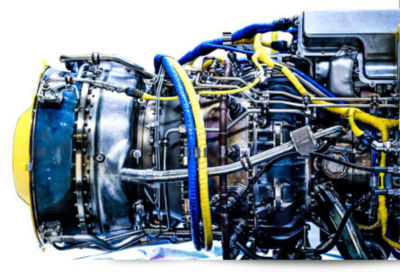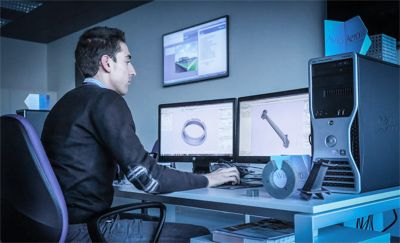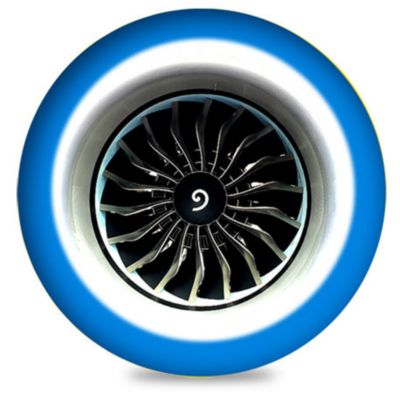-
-
学生向け無料ソフトウェアにアクセス
Ansysは次世代の技術者を支援します
学生は、世界クラスのシミュレーションソフトウェアに無料でアクセスできます。
-
今すぐAnsysに接続!
未来をデザインする
Ansysに接続して、シミュレーションが次のブレークスルーにどのように貢献できるかを確認してください。
国および地域
無料トライアル
製品およびサービス
リソースとトレーニング
当社について
Back
製品およびサービス
ANSYS DIMENSIONS MAGAZINE
DATE: 2020
Common Thread
Luca Bedon, Senior Engineering Section Manager, Avio Aero – a GE Aviation business, Turin, Italy
Aerospace leader GE Aviation is pioneering an innovative concept: creating a “digital thread” that follows designs from their earliest ideation through real-world operation. By centralizing all data related to a specific design, the company is not only accelerating the pace of development and increasing staff productivity, but also significantly and consistently improving product quality. Even more exciting, soon digital twins will create a closed-loop process that feeds operating data back to engineers.
Pressured by new environmental and safety regulations, rising fuel costs and consumer price concerns, commercial airlines are demanding highly innovative product solutions — delivered faster than ever.
Designing systems and components for commercial jet engines has always been a difficult task, characterized by engineering complexity, strict industry regulation and zero tolerance for product failures. Today, aerospace engineering is even more challenging.
Pressured by new environmental and safety regulations, rising fuel costs, and consumer price concerns, commercial airlines are demanding highly innovative product solutions — delivered faster than ever. In recent years, the number of days until delivery mandated by aerospace customers has decreased by an order of magnitude as jet manufacturers struggle to keep pace with market demand.
Avio Aero — a GE Aviation business and a global leader in manufacturing jet engine systems and components — realizes that meeting these growing demands can only be achieved by identifying and applying best-in-class engineering technologies. A user of engineering simulation for over 20 years, the business has recently increased the impact of this technology by training more people and expanding its applications beyond the engineering function.
With support from the Italian government’s National Industry 4.0 program — aimed at maintaining the competitiveness of technology leaders like Avio Aero — today the company is at the leading edge of digitalization, pioneering new ways to gather, analyze and apply engineering data. The majority of the product development engineers in Turin, Italy, and in all the company’s other sites are trained to use simulation. This creates a sense of shared ownership and collaboration that can lead to dramatic innovations.
This commitment to innovation positions the company for continued leadership, even as the business environment grows more and more challenging.
It means that every future design benefits from the lessons of the past.
Digital Thread: A Cutting-Edge Concept
GE Aviation has pioneered an innovative concept called the “digital thread” — a common set of engineering and product performance data that is expanded daily and shared by all key stakeholders in the business.
What led GE Aviation to embrace this idea? The company recognized that, by making its engines more digital and more connected over time, it was generating and gathering a huge volume of performance data. In fact, data generated and collected from today’s fleet of smart engines is growing exponentially compared to the traditional designs before 2010, in the “no digital” era. An extensive use of analytics, combined with physical models enabled by advanced simulation capabilities, would allow GE Aviation to get meaningful insights that could be employed to improve product performance and reliability, profitability, and customer-oriented solutions — optimized according to how engines actually operate.
Engineering simulation data plays a central role in the digital thread strategy at Avio Aero. Simulations of jet engine components and systems are numerically large — encompassing multiple physics, complex reactions and transient forces. Simulation was making a significant contribution to the speed, cost and quality of the company’s product development processes, but Avio Aero recognized that the benefits of simulation would be amplified if all simulation data were collected and made accessible to all stakeholders.
Today, for each product design, information is gathered at the earliest stages of ideation — and that data follows the design throughout its lifecycle, as the component is verified, tested, redesigned and released to the manufacturing function. Any design rework is simplified because all existing information related to that design is immediately available and unambiguously identified by the same part number. Costly and time-consuming repetitive handoffs have been eliminated. Anyone, anywhere in the business can see at a glance where each design stands and easily contribute to the product’s ultimate success.
Increasing Data Availability And Access
Avio Aero calls this process “creating a single source of the truth,” and the benefits cannot be overstated. Increased information access means that every single product design moves more quickly and cost-effectively through the development cycle, eliminating unnecessary redundancies and streamlining incremental improvements to that design.
But, equally important, it means that every future design benefits from the lessons of the past. Engineers conducting a new simulation can easily see if a similar study has already been carried out. They can start with accurate product geometries and operating parameters, based on what has worked — or not worked — in the past. This gives Avio Aero a critical competitive advantage as it meets tighter and tighter product delivery deadlines.
Closing The Loop Via Digital Twins
The result of Avio Aero’s digitized product development process is a virtual prototype that has been produced through collaborative engineering and is now ready for physical testing. Any physical test results are collected as part of the digital thread, impacting any rework on that product, but also becoming part of the company’s general knowledge base.
What’s next on the horizon is even more exciting. The next step is the creation of the product’s digital twin, developed by partnering with the customer and placing sensors on an actual working product. When this is achieved, Avio Aero will be able to collect real-world operating data in near–real time. By applying the same physical conditions to its virtual prototype, Avio Aero can see the effects of long-term operation. This will enable the business to predict failures, schedule maintenance, order repair parts and otherwise improve each working product’s performance over time.
Digital twins will also close the loop on the digital thread — creating, for the first time, a view of a product design’s entire lifecycle, from earliest ideation through real-world operation. The insights gathered across this lifecycle will be available and accessible to every stakeholder within Avio Aero, impacting future designs and forming the foundation for high product performance for years to come.
Turning Specialists Into Strategists
Identifying and applying advanced technology, including simulation, has been critical in Avio Aero’s move to digitalize its engineering efforts. But equally important has been the cultural change needed to support this initiative.
“Twenty years ago, everyone in the engineering function was a specialist, with a narrowly defined role,” says Luca Bedon, Senior Engineering Section Manager. “For example, someone would learn to run a CFD simulation, and that’s all they would do, all day. They didn’t have a view toward the ultimate success of the product — because they didn’t see what happened after they completed their isolated task.”
According to Bedon, today the engineering team at Avio Aero has a completely different mindset. “We completely redefined the role of what we called ‘specialists,’ shaping a different organization based on a system mindset and showing everyone that they can contribute to the product’s success,” he explains. “We’ve trained half the team in simulation, so anyone can pick up a project and work on it. We’ve eliminated handoffs, increased ownership and given everyone visibility into the end-to-end product lifecycle.
“That has created a strategic perspective and a feeling that every employee is contributing to the shared success of Avio Aero,” Bedon adds. “That’s a big cultural change, but one that our employees have really embraced. They enjoy their work and believe they really are playing a key role in our top-level business strategy.”
ANSYS: A Strategic Partner
An Ansys customer for over 20 years, Avio Aero has relied heavily on Ansys to help implement its vision of the digital thread. Since Ansys is the acknowledged leader in simulation technology, it only makes sense for Avio Aero to leverage its advanced solutions as it creates a next-generation digital architecture.
Ansys has not only provided best-in-class simulation solutions that cross multiple physics and engineering functions, but it offers a unified platform that supports easy collaboration. Ansys experts consulted with Avio Aero on the best ways to integrate Ansys solutions with the company’s data architecture, as well as its suite of in-house and third-party tools.
Avio Aero defined its vision of how engineers would work together in the future, and Ansys helped the company achieve that vision. Over time, Avio Aero’s relationship with Ansys has evolved into a true strategic partnership.
Digitalization Takes Off
To meet growing customer demands, new environmental standards and stricter regulatory protocols, GE Aviation must support the development of the most innovative, high-tech jet engine ever produced. Realizing this goal means employing the most innovative, high-tech product development strategy. This rationale led GE Aviation to embrace the concept of an end-to-end digital thread that collects and leverages insights at every stage of the product lifecycle.
Not every company makes products as complex as jet engine systems, or competes in an industry as demanding as the global aerospace business. But every engineering team can benefit from the concept of the digital thread — a single source of data and a shared version of the truth for every product design. Making a commitment to gathering and leveraging simulation data speeds the development process, maximizes staff productivity, minimizes rework and ultimately improves product quality. This concept is taking off — and with good reason.
AVIO AERO At A Glance

| Number of employees: | 4,800 |
| Headquarters: | Rivalta di Torino, Italy |





